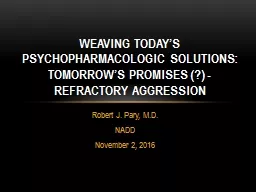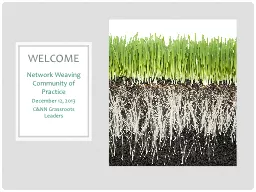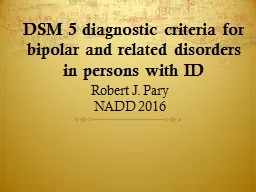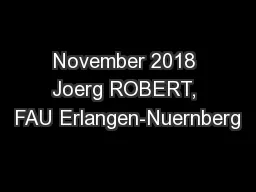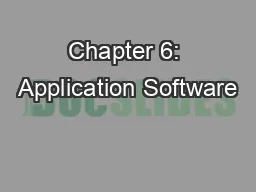PPT-Robert J. Pary, M.D. NADD November 2, 2016 Weaving Today’s Psychopharmacologic Solutions:
Author : phoebe-click | Published Date : 2019-11-02
Robert J Pary MD NADD November 2 2016 Weaving Todays Psychopharmacologic Solutions Tomorrows Promises refractory aggression Goal 1 The greatest enemy of knowledge
Presentation Embed Code
Download Presentation
Download Presentation The PPT/PDF document "Robert J. Pary, M.D. NADD November 2, ..." is the property of its rightful owner. Permission is granted to download and print the materials on this website for personal, non-commercial use only, and to display it on your personal computer provided you do not modify the materials and that you retain all copyright notices contained in the materials. By downloading content from our website, you accept the terms of this agreement.
Robert J. Pary, M.D. NADD November 2, 2016 Weaving Today’s Psychopharmacologic Solutions:: Transcript
Download Rules Of Document
"Robert J. Pary, M.D. NADD November 2, 2016 Weaving Today’s Psychopharmacologic Solutions:"The content belongs to its owner. You may download and print it for personal use, without modification, and keep all copyright notices. By downloading, you agree to these terms.
Related Documents

